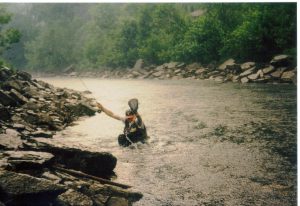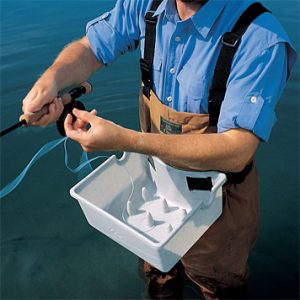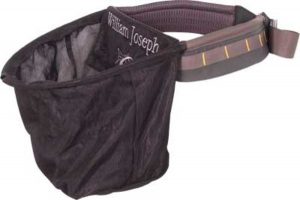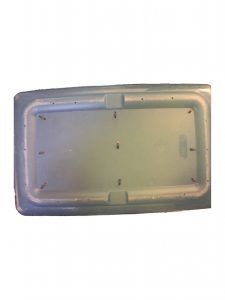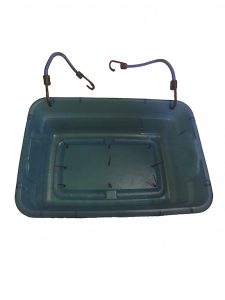They ruined the best trout river in the Eastern United States. At least that’s what any trout angler old enough and fortunate enough to fish the Little Tennessee River, or “Little T” as it was known, will tell you. Ask one of the many farmers that lost their family land when the Little T met its demise and you’ll hear even greater resentment and disdain for the Tennessee Valley Authority that seems to burn every bit as hot today as it did more than thirty years ago.
Despite the protests of landowners, anglers, and endangered resident snail darters, the Little Tennessee was dammed in 1977 in the name of economic stimulus and flood control. But nothing could control the flood of controversy that rose from this action. The resulting Tellico Lake now placidly covers the once great trout river; and the surrounding land, once owned by generations of family farms, has been sub-divided, sold, and developed into exclusive communities.
As a trout fishery, the Little T boasted rainbow and brown trout routinely measuring 4 to 5 pounds with fish even larger taken on a fairly regular basis. Anglers still talk about the clouds of caddis that blanketed the river as if they were just drifting an Elk Wing there last week. Poke your head into the right huddle of fly shop dwellers, and you’ll still hear a flow of rumors about that 30-pound brown trout at “the trash pile” as if next time might be the time he falls for that newfangled streamer pattern. But even though the largest of dams and deepest of lakes don’t seem enough to drown perfect memories, there won’t be a next time…. Thanks to that dam.
The irony, however, is that the Little T never would have been “the best trout river in the Eastern United States” had it not been for a dam, as the upper part of the Little Tennessee River drainage already had multiple impoundments dating back to the 1930’s. Though unlike the normal, massive impoundments of the TVA system, these were created and operated by Tapoco, a subsidiary of the Aluminum Company of America. The result was a series of undeveloped finger lakes that snaked and stair-cased down the drainage on the southwestern edge of what is now Great Smoky Mountains National Park. In fact, the first impoundment, Cheoah, predated the creation of the Tennessee Valley Authority by nearly 15 years. The fabled Little Tennessee River flowed from below Chilhowee Dam, the final Tapoco created project in the system.
Stories about opposition to dams are not exactly rare in the fishing community. Issues in the Western United States with dams blocking natural migrations of native fish have been well chronicled over the last couple of decades. But these stories have unfolded time and time again for nearly a century in the South, particularly during Roosevelt’s New Deal.
Coming out of The Great Depression, national economic conditions were far worse than even today and the southern region of the U.S. was particularly battered. Years of heavy farming had taken its toll on the land and massive flooding was eroding what was left of the soil. All of the best timber had already been harvested and the very limited amount of electricity in the mostly rural region made it nearly impossible to attract or create any real industry. The formation of the Tennessee Valley Authority in 1933 was intended to change all of that.
The TVA began an aggressive project of damming many of the major waterways in the Tennessee Valley. The unfortunate result was that the valley floor behind the newly created dam became a massive lake, meaning many people lost their homes, most of which were farms that had been in the family for generations. Additionally, habitat in miles of free flowing rivers was destroyed. The benefit however, was that water levels could be controlled by releasing (or not releasing) water through the dam, thus preventing future flooding that had devastated the land and its people. Another benefit was that when water was released, it would rotate a number of turbines in the process, creating hydro-electric power that could provide affordable electricity to most of the region.
They flooded homes to prevent homes from flooding. It’s the same Orwellian doublethink that, for better or worse, has shaped much of the history of this nation. And we as anglers are not immune to it. On one hand we tend to strongly oppose anything that threatens fish habitat or really anything in the natural world, yet we now frequently find ourselves trying to protect something that did just that. Think of some of the best trout fishing rivers in the Southern United States. The South Holston, Watauga, Chattahoochee, Clinch, Hiwassee, Cumberland, White, Little Red, just to name a few, are all tailwaters that were formed by damming rivers, flooding land, and destroying homes and habitat. At least half the folks in the south were passionately against the formation of these dams at the time.
It’s difficult to imagine that less than a century ago these same rivers didn’t hold a single trout. Water temperatures were simply too warm to support trout and instead, these same rivers were full of smallmouth bass and even largemouth bass at their lower reaches. The formation of a new type of fishery below these impoundments, now commonly known as a tailwater or tailrace, was not even a consideration when these projects were originally conceived. In fact, it was believed by fisheries experts that these tailwaters would be sterile, oxygen deprived deserts, unsuitable for any real fish population. It was actually in Calderwood Lake, one of the early Tapoco impoundments, where it was later realized that wild mountain trout had been migrating from feeder streams into the lake’s cold waters and were growing and thriving. This realization eventually spawned regular stocking programs on these lakes and throughout TVA’s massive tailwater system.
Over time, tailwaters didn’t just, as expected, become fisheries that would support trout for put-and-take angling. Instead, the trout grew quickly on the ample amounts of food in these waters and held over year-to-year to grow even larger. In some instances, the trout even began reproducing and all of a sudden, the formerly trout-deprived Southeastern United States found itself with multiple trout rivers that rivaled some of the best in the world. In fact, until recently, one of these man-made fisheries in Arkansas was home to the world record brown trout. It’s no wonder trout anglers are so protective of these rivers today and that trout anglers more than thirty years ago were so protective of the Little T.
But is that all we’re about? Does the end justify the means as long as, and only if, the end includes a fishery that supports big fish? Can we as anglers reasonably and logically criticize one decision to build a dam, flood land, remove homes, and destroy habitat yet support and protect other decisions that did the exact same thing?
As the title of this article implies, there just doesn’t seem to be a clear-cut solution that will please everyone when it comes to this issue, and there never has been. As with most large scale dilemmas that affect an entire country, or at the least, an entire region, maybe all you can hope for is a solution that will benefit the most people for the longest period of time while doing the least amount of harm to the people who are negatively impacted.
It is often decades before history can truly measure the consequences of the actions we take today. Upon reflection, most would probably agree that the multitude of TVA projects executed during the New Deal era ultimately served the greater good of the Southern United States. And as a bonus, hordes of trout-crazy anglers are still reaping the benefits of the amazing fisheries that resulted from those projects. I can’t help but wonder though, if in another 40 or 50 years we’ll look back and feel the same way about what they did to the Little T. Was the greater good served, or was the best trout river in the Eastern United States destroyed merely for the development of exclusive lake-front property?

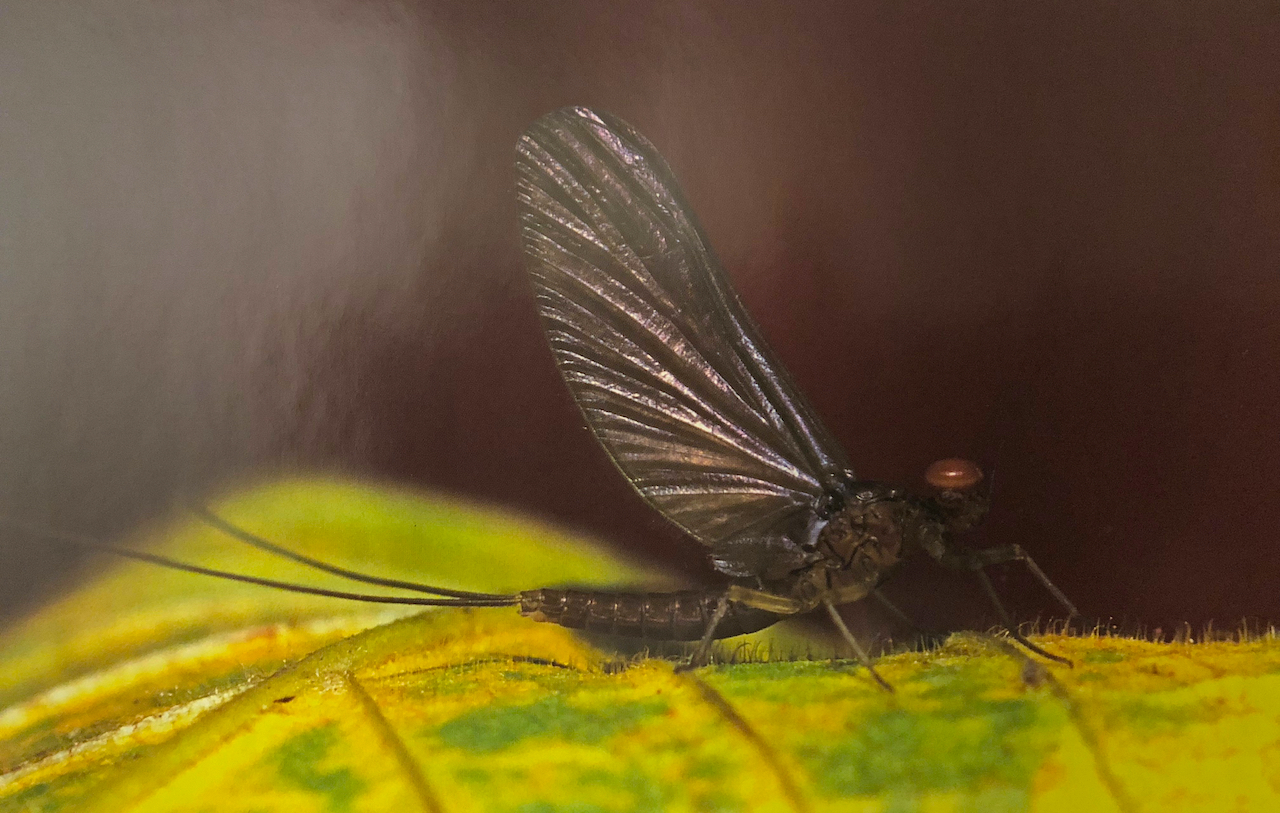 Winter seasons are not typically known to produce large hatches of aquatic insects, particularly in our part of the country. However, if you’re going to run into a hatch worthy of bringing fish to the surface during the cold winter months, it’s likely to be a hatch of Blue Wing Olive mayflies. Blue Wing Olives, or BWO’s as they’re commonly called, are one of the most erratic hatches that I know of. While most aquatic insects hatch at fairly predictable times of the year, BWO’s are likely to come off anytime of the year, typically on the crappiest day imaginable.
Winter seasons are not typically known to produce large hatches of aquatic insects, particularly in our part of the country. However, if you’re going to run into a hatch worthy of bringing fish to the surface during the cold winter months, it’s likely to be a hatch of Blue Wing Olive mayflies. Blue Wing Olives, or BWO’s as they’re commonly called, are one of the most erratic hatches that I know of. While most aquatic insects hatch at fairly predictable times of the year, BWO’s are likely to come off anytime of the year, typically on the crappiest day imaginable.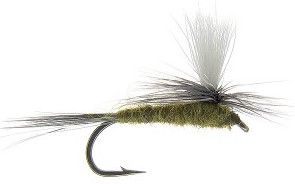
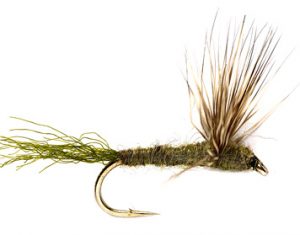
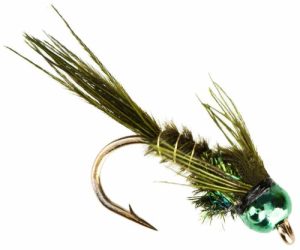
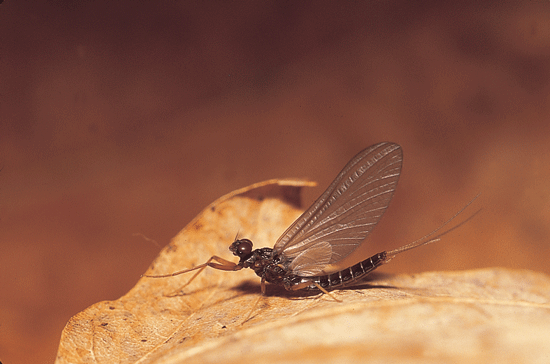 Blue Quills represent one of the first good mayfly hatches of the year in the Smokies. By “good,” I mean they can come off in big enough numbers and with enough consistency for trout to really take notice. As with most aquatic insects, water temperature determines when they hatch and being an early season bug, there can be as much as a three week variation from year to year.
Blue Quills represent one of the first good mayfly hatches of the year in the Smokies. By “good,” I mean they can come off in big enough numbers and with enough consistency for trout to really take notice. As with most aquatic insects, water temperature determines when they hatch and being an early season bug, there can be as much as a three week variation from year to year.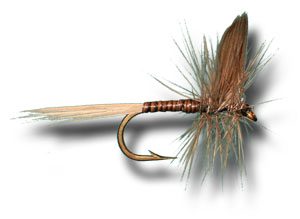
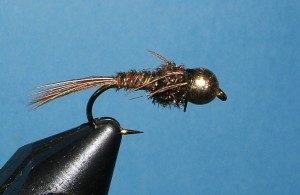
 “When all else fails, try an ant.”
“When all else fails, try an ant.”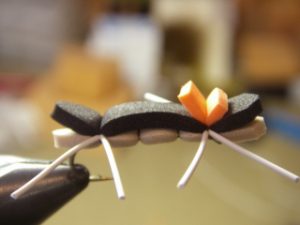
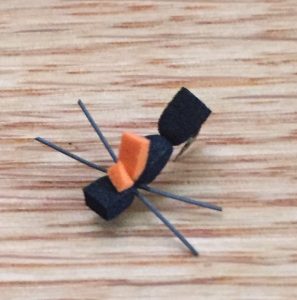
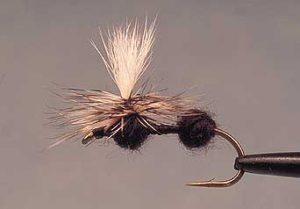
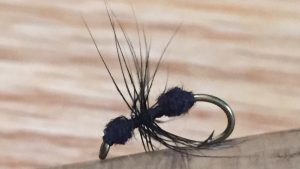
 As many of you know, I spend nearly 200 days a year fishing and guiding on small mountain streams in the Smoky Mountains where creel surveys indicate that approximately 90% of (unguided) fishermen never catch a fish. Meanwhile, the 10% who do catch fish tend to catch A LOT of them. When fishing small streams, it’s a fine line between getting skunked and catching 50, and most of the time, the difference isn’t what’s in your fly box. In the Smokies and other similar small mountain streams, approach and presentation is the name of the game and to have success, you may need to adjust a few of your techniques. Listed below are 10 tips that may make your next small stream fishing trip more productive.
As many of you know, I spend nearly 200 days a year fishing and guiding on small mountain streams in the Smoky Mountains where creel surveys indicate that approximately 90% of (unguided) fishermen never catch a fish. Meanwhile, the 10% who do catch fish tend to catch A LOT of them. When fishing small streams, it’s a fine line between getting skunked and catching 50, and most of the time, the difference isn’t what’s in your fly box. In the Smokies and other similar small mountain streams, approach and presentation is the name of the game and to have success, you may need to adjust a few of your techniques. Listed below are 10 tips that may make your next small stream fishing trip more productive.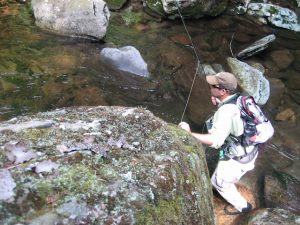
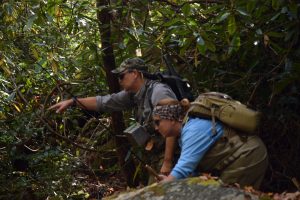
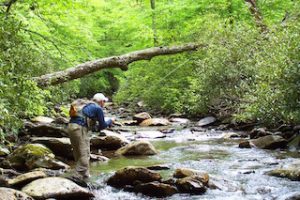
 October is the time of year I start wearing waders again in the mountains. For much of the year, usually from May through October, water temperatures are comfortable enough to wet wade, wearing only the wading boots and neoprene socks. But in winter, early spring, and late fall (or any time of year on tailwaters), you better have a decent set of waders if you want to stay comfortable on the stream.
October is the time of year I start wearing waders again in the mountains. For much of the year, usually from May through October, water temperatures are comfortable enough to wet wade, wearing only the wading boots and neoprene socks. But in winter, early spring, and late fall (or any time of year on tailwaters), you better have a decent set of waders if you want to stay comfortable on the stream.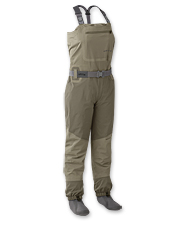


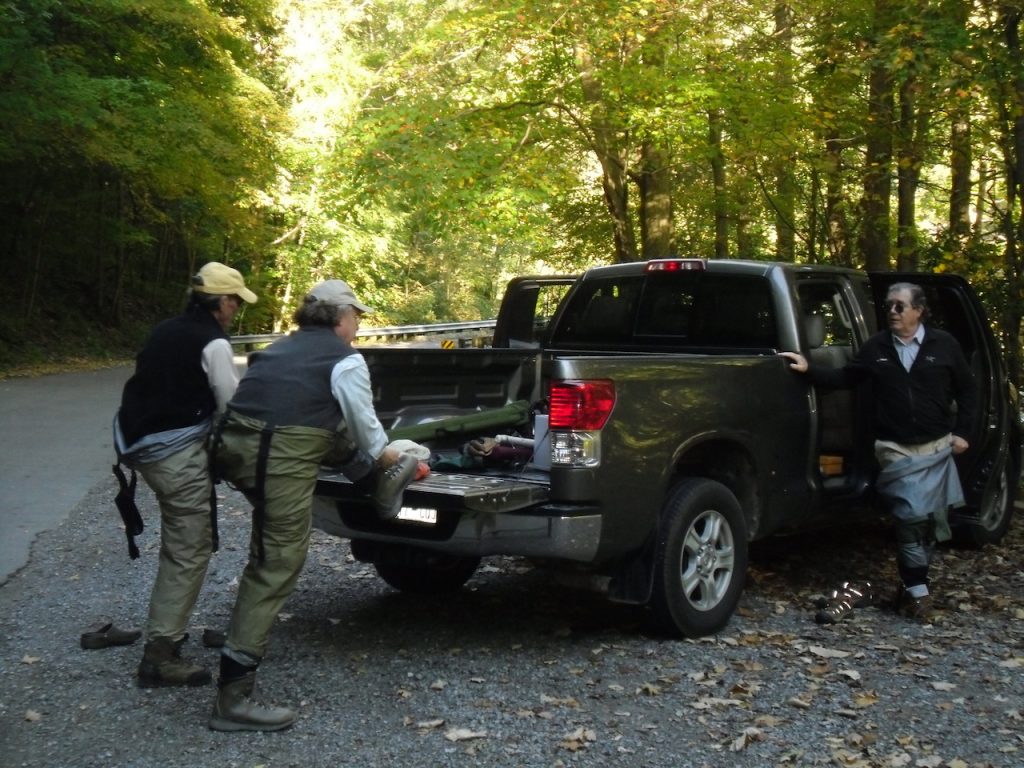 When I first got into fly fishing, I didn’t have any money. At that age, you simply had to get what you could get when you could get it, and that often meant holding out until birthday or Christmas. I had a cheap rod and reel outfit and a box of flies. My fishing “vest” was my uncle’s old Marines shirt with the sleeves cut off. The bellows pockets on the front were plenty big to hold my one fly box and any other accessories. And I had a pair of fingernail clippers, Trim brand, hung around my neck on a piece of fly line. My wading gear consisted of cutoff Duckhead shorts and an old pair of Asics running shoes.
When I first got into fly fishing, I didn’t have any money. At that age, you simply had to get what you could get when you could get it, and that often meant holding out until birthday or Christmas. I had a cheap rod and reel outfit and a box of flies. My fishing “vest” was my uncle’s old Marines shirt with the sleeves cut off. The bellows pockets on the front were plenty big to hold my one fly box and any other accessories. And I had a pair of fingernail clippers, Trim brand, hung around my neck on a piece of fly line. My wading gear consisted of cutoff Duckhead shorts and an old pair of Asics running shoes.
